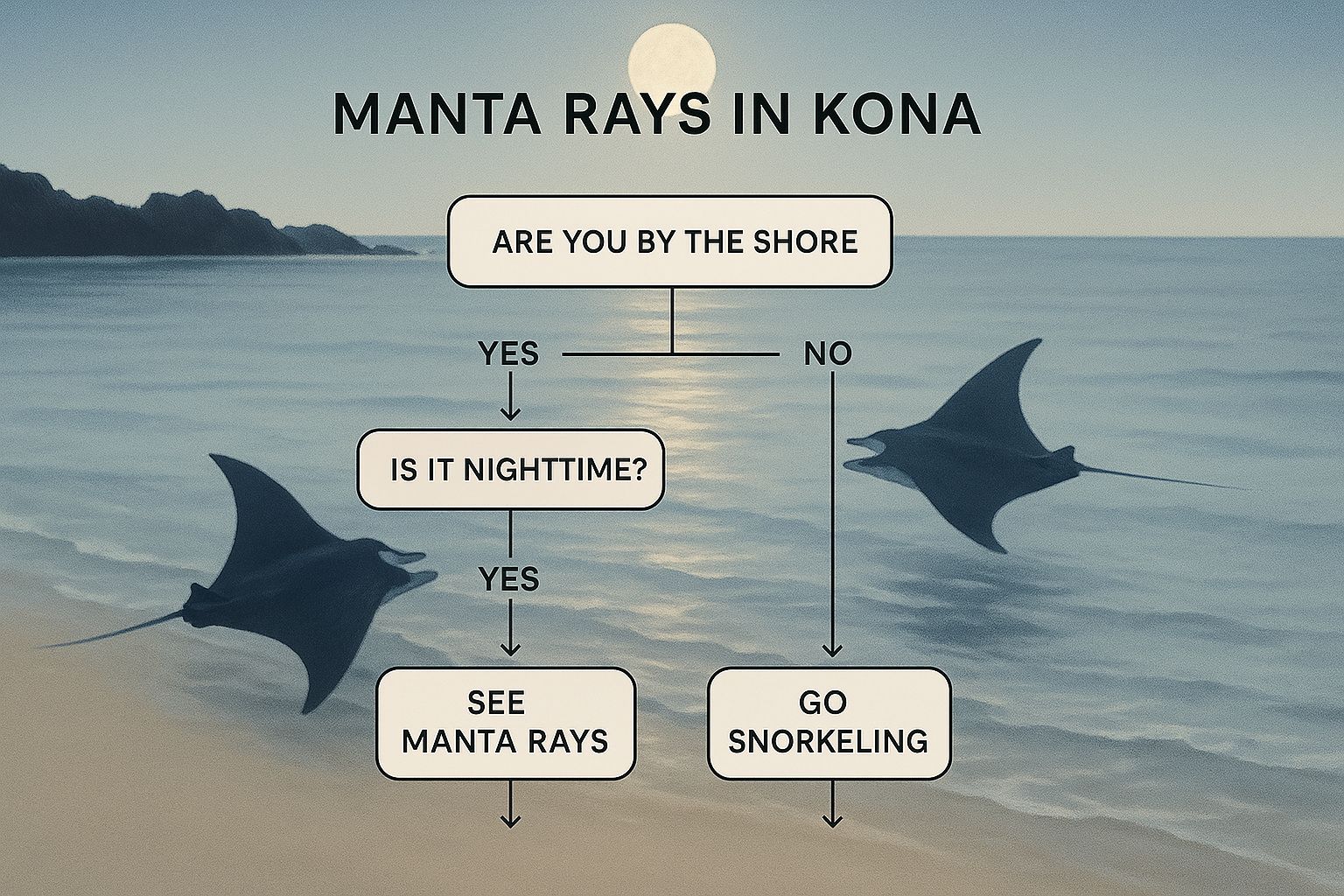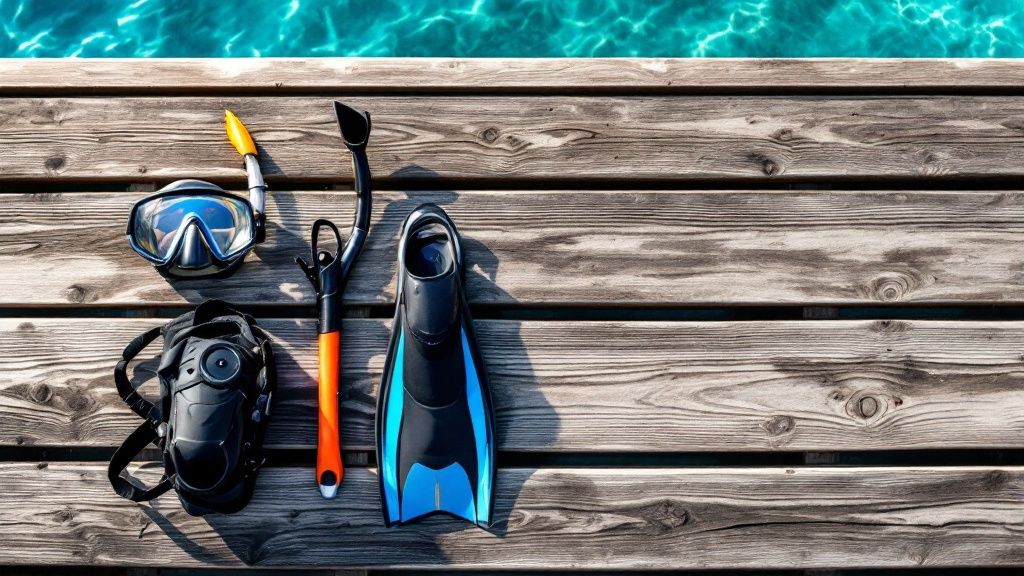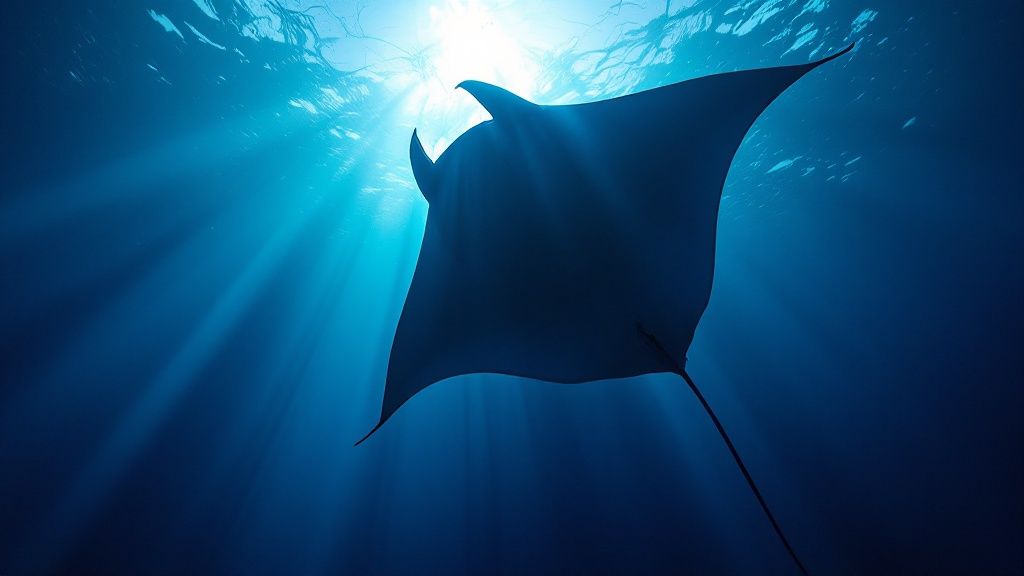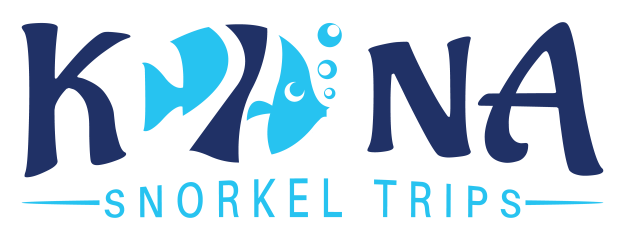Snorkeling with Manta Rays Kona: Top Tours & Tips

Why Kona's Waters Create the Perfect Manta Ray Playground
Kona, Hawaii, is a prime destination for snorkeling with manta rays. What draws these magnificent creatures? It's a special mix of geography and biology. The Big Island's volcanic slopes create nutrient-rich waters, ideal for the tiny organisms that manta rays eat – plankton. These slopes also create strong currents that bring this plankton to the surface, providing a readily available feast.
This consistent food supply explains why manta rays are here all year. Kona's calm, clear waters also offer perfect snorkeling conditions, allowing for up-close encounters. This clear visibility, combined with the dependable food source, explains Kona's high manta ray sighting rates. For a deeper understanding of what makes Kona a manta ray haven, check out this guide: Manta Ray Snorkel Kona Hawaii: The Ultimate Experience Guide.
The Role of Plankton and Volcanic Activity
The Big Island's volcanic history is essential to the manta ray ecosystem. Over thousands of years, lava flows have formed a complex underwater terrain, boosting plankton growth. Rainwater, filtering through the volcanic rock, absorbs minerals and nutrients, then carries them into the ocean.
This process creates a vibrant environment, attracting large amounts of plankton. This supports a flourishing manta ray population. Tour operators use lights to amplify this, creating localized "plankton blooms" that bring manta rays closer to the surface. This results in spectacular viewing opportunities for snorkelers.
One remarkable aspect of Kona's manta ray snorkeling is the high sighting rate. Tour operators report seeing manta rays 80 to 90% of the time. This is attributed to the use of lights to draw in plankton, which then attract the manta rays. The stable environment and nutrient-rich waters, a result of the Big Island's volcanic slopes, make Kona a reliable location for manta ray encounters.
Because sightings are frequent throughout the year, Kona attracts many tourists seeking this unique wildlife experience. More than 80,000 people annually participate in these snorkeling adventures, contributing significantly to the local economy. Learn more about Manta Ray statistics.
Kona: A Manta Ray Paradise
The blend of nutrient-rich waters, abundant plankton, and excellent visibility make Kona a special place for manta ray snorkeling. You might be interested in: Kona Snorkel Trips Sitemap. This distinct ecosystem supports a healthy and active manta ray population, leading to unforgettable experiences.
To explore your options, visit Kona Snorkel Trips and Captain Cook Snorkeling Tours. For more information and bookings, see Manta Ray Night Snorkel Hawaii and Kona Snorkel Trips Manta Ray Snorkel.
Manta Villages vs. Manta Heaven: Choosing Your Perfect Spot

The decision tree above helps visualize the key factors to consider when choosing between the two main manta ray viewing locations. By following the branches, you can pinpoint the best spot based on your individual needs.
Kona, Hawaii, offers two incredible locations for snorkeling with manta rays: Manta Village and Manta Heaven. Each location offers a unique experience, making the decision of which spot to visit an important part of your trip planning. Understanding the characteristics of each site will greatly enhance your snorkeling adventure.
Understanding the Decision Tree
The decision tree infographic presents a simple method for choosing the right location for your manta ray snorkeling experience. It takes into account several factors, such as experience level and time of year, to guide you to the best fit. Simply answer the questions presented to determine which site is ideal for your preferences and needs. For further reading, check out more articles about manta ray snorkeling.
Key Decision Points
One of the first factors the decision tree addresses is your experience level. Manta Village is frequently recommended for beginners due to its generally calmer waters. For more experienced snorkelers, Manta Heaven, with its sometimes more challenging conditions, may be a more suitable option.
Another important consideration is the time of year. Seasonal changes in water conditions and plankton density can affect manta ray activity. Sometimes, one site might have a higher concentration of plankton, attracting more manta rays. Group size also factors into the decision, as some tours adjust their chosen location based on water clarity and current plankton levels.
Snorkeling with manta rays in Kona has become increasingly popular, thanks to the unique and memorable encounters it offers. Manta Village, located near Keauhou, is often preferred by beginners due to its calm waters. Manta Heaven, located north of Keauhou, presents a different underwater environment that can sometimes attract larger groups of manta rays, appealing to experienced snorkelers. Tour operators strategically choose between the two locations based on plankton levels and ocean conditions, aiming to optimize your chances of an unforgettable experience. This flexibility, combined with the high sighting success rate, has made Kona a premier destination for manta ray snorkeling adventures. Learn more about Kona Manta Ray Snorkeling.
Expected Outcomes
Using the decision tree will help you decide which spot—Manta Village or Manta Heaven—best suits your needs, increasing your chances of an amazing encounter with these majestic creatures. The decision tree provides a personalized recommendation based on your individual circumstances.
To make your snorkeling experience even better, consider booking a tour with Kona Honu Divers. They provide exceptional tours and a variety of options for exploring Kona's vibrant underwater world. You can also explore additional tours and information at Kona Snorkel Trips and Manta Ray Night Snorkel Hawaii. For even more exploration options, visit Captain Cook Snorkeling Tours.
To help you compare the two locations, the table below summarizes the key features of each site:
Manta Ray Viewing Locations Comparison: A detailed comparison of the main manta ray viewing sites in Kona, helping visitors choose the best location for their experience level and preferences
| Feature | Manta Village | Manta Heaven |
|---|---|---|
| Water Conditions | Generally Calm | Can be more challenging |
| Experience Level | Beginner-friendly | Suitable for experienced snorkelers |
| Location | Near Keauhou | North of Keauhou |
| Group Size | Varies, operators adapt | Varies, operators adapt |
This table highlights the key differences between the two locations, showing that Manta Village offers calmer waters ideal for beginners, while Manta Heaven presents a potentially more challenging but rewarding experience for seasoned snorkelers. Both offer unique opportunities to encounter manta rays, and the best choice depends on individual preferences and experience.
From Boat to Water: The Manta Ray Snorkeling Experience

So, you've decided to snorkel with manta rays in Kona, and you’ve chosen your spot – Manta Village or Manta Heaven. What happens next? This guide details what you can expect from your Kona manta ray snorkeling adventure, from check-in to stepping back on shore.
Preparing For Departure
Most Kona manta ray snorkeling tours start with a check-in on the shore. You'll meet your guides, get your snorkeling gear, and receive a safety briefing. This typically covers basic snorkeling techniques, respectful behavior around the manta rays, and emergency procedures. Many tours also offer wetsuits or flotation devices for extra comfort.
You'll then board the boat and set off for your snorkeling destination. The trip usually takes about 20-30 minutes, giving you time to take in the Kona coastline and maybe even spot some dolphins. For other activities, check out this Kona Snorkel Trip Activities guide. Once at the site, the guides will lower bright lights into the water. These lights attract plankton, forming a "plankton soup" that brings the manta rays close to the surface.
The Manta Ray Ballet
As the manta rays arrive, you’ll enter the water, holding onto a flotation device with handrails. This lets you stay put while enjoying the amazing underwater view. The manta rays, some with wingspans of up to 16 feet, glide through the illuminated water, often doing acrobatic barrel rolls as they feed on the plankton.
It’s a truly captivating experience. These gentle giants, lit by the underwater lights, swim just inches below you. The dark water, the subtle ocean sounds, and the graceful manta rays create an unforgettable, almost dreamlike atmosphere.
Returning To Shore
After about an hour of snorkeling, you’ll climb back onto the boat. During the ride back to shore, the guides often share facts about manta rays and answer your questions. It’s a fantastic chance to learn more about these incredible creatures.
Once back on land, you can share your experience, photos, and videos with your fellow snorkelers. Most tour operators also offer photos and videos for sale, capturing your special encounter with Kona's manta rays.
Tour Logistics and Considerations
Most snorkeling with manta rays Kona tours last about two to three hours, including travel time. Group sizes typically range from 10 to 30 people, varying by tour operator.
For the best experience, bring a waterproof camera or rent one from the tour operator. A light jacket or extra layer can be useful for the boat ride back.
To make booking easier, we've compiled this table comparing several reputable tour operators in Kona:
Manta Ray Tour Operators in Kona
A comparison of highly-rated manta ray snorkeling tour operators in Kona, including their offerings, prices, and unique features
| Tour Company | Tour Duration | Group Size | Price Range | Special Features |
|---|---|---|---|---|
| Kona Honu Divers | ~2.5 hours | Varies | Check website | Experienced guides, small groups |
| Manta Ray Night Snorkel Hawaii | ~2.5 hours | Varies | Check website | Focus on conservation, educational talks |
| Kona Snorkel Trips | ~3 hours | Varies | Check website | Multiple departure times, online booking |
| Captain Cook Snorkeling Tours | ~3 hours | Varies | Check website | Historical information, family-friendly |
This table provides a starting point for your research. Remember to check each operator's website for the latest pricing and availability. Booking in advance is highly recommended, especially during peak season.
The Magnificent Biology Behind Your Manta Ray Encounter
Snorkeling with manta rays in Kona is more than just a fun activity. It's an opportunity to connect with a truly unique creature. Understanding a bit about the biology of these gentle giants transforms a simple sightseeing trip into a profound experience. It allows you to appreciate the intricate workings that allow them to flourish in the ocean.
Feeding Like a Whale, Graceful Like a Bird
Manta rays are filter feeders. This means they consume large quantities of tiny plankton and other small organisms. They achieve this with special cephalic fins, which guide water and food into their mouths. To give you a sense of the sheer volume, manta rays can filter thousands of gallons of seawater each hour. Their feeding method is remarkably similar to how baleen whales filter krill, a striking example of convergent evolution.
Manta Ray Intelligence and Individuality
Beyond their feeding habits, manta rays possess surprising intelligence. They have the largest brain-to-body ratio of any fish, suggesting a high level of cognitive function. Researchers believe this intelligence contributes to their complex social interactions and developed feeding strategies.
Each manta ray also has a unique pattern of spots on its underside, much like a human fingerprint. Researchers use these belly patterns to identify individuals, track their movements, and study their behavior.
Commercial snorkeling tours often participate in photo identification programs, contributing to this valuable research. By submitting photos of manta ray bellies, tours provide data to ongoing studies. This collaborative effort helps scientists monitor the health and population of Kona's manta rays. Find more information about this on our sitemap.
The Value of Long-Term Research
Ongoing research has significantly increased our knowledge of these majestic animals. For example, between 2009 and 2014, meticulous records were kept of individual manta rays observed during night dives at popular spots like Manta Village and Manta Heaven. These records, documenting the condition and movements of over 60 identified manta rays, offer valuable insights into their range and travel patterns. The research even helps scientists predict when manta ray sightings are more probable. Learn more about this fascinating research here. This information not only deepens our appreciation for these animals, but also plays a vital role in conservation efforts by informing us about their habits and habitat use.
Understanding these aspects of manta ray biology enhances the snorkeling experience. Knowing how they feed and behave allows you to anticipate their movements and marvel at the evolutionary wonder unfolding before you. To book your own manta ray adventure, visit Kona Honu Divers, Manta Ray Night Snorkel Hawaii, Kona Snorkel Trips and Captain Cook Snorkeling Tours.
Mastering the Night: Tips For An Unforgettable Manta Experience

Snorkeling with manta rays in Kona at night is a truly special experience. Even experienced snorkelers, however, can benefit from a little extra preparation. This section offers practical advice to maximize your comfort and enjoyment during this unique adventure.
Conquering Night-Water Anxiety
For some, the idea of snorkeling in dark water can be a little intimidating. With the right preparation and a positive mindset, any apprehension can be easily overcome. You'll be accompanied by experienced guides whose priority is your safety. The bright lights used to attract plankton will also illuminate the water, increasing visibility and reducing any feelings of unease.
Focusing on the excitement of seeing the manta rays up close also helps. This allows you to shift your attention from any potential anxiety and towards the incredible experience ahead. Remember, you're about to witness something truly magical.
Staying Warm And Comfortable
The ocean, even in Kona, can get cool at night. Wearing a wetsuit, often provided by tour operators, is key for staying warm. Many operators also provide flotation devices, which offer not only safety but added insulation. This allows you to stay in the water longer, fully enjoying the manta ray experience.
Consider bringing a light jacket or towel for the boat ride back to shore. The air temperature can be noticeably cooler than the water, especially after you've been immersed for a while. This will help you avoid getting chilled on the return trip.
Positioning For The Best Views
While manta rays often swim close to the surface, proper positioning enhances your experience. Most tours utilize flotation devices with handrails, allowing you to comfortably float. Guides typically instruct snorkelers to hold onto the devices and remain relatively still.
This minimizes disturbance to the manta rays and helps you focus on observing their graceful movements. Remember to look down and around, as these magnificent creatures can approach from any direction. You won't want to miss a single moment of their underwater ballet.
Capturing The Magic: Photography Tips
Capturing the beauty of manta rays in low light requires certain techniques. A waterproof camera with a good low-light setting is essential. If using a GoPro or similar camera, a red filter is a worthwhile investment. This filter neutralizes the blue tones of the water, resulting in more natural-looking images.
For more detailed photography advice, consider checking online resources or contacting local photographers. For tour information, visit Kona Honu Divers, Manta Ray Night Snorkel Hawaii, and Kona Snorkel Trips. For other snorkeling adventures, check out Captain Cook Snorkeling Tours. By following these tips, you can make your manta ray snorkeling experience in Kona even more memorable.
Selecting Your Perfect Manta Ray Tour: Beyond the Basics
Choosing the perfect manta ray snorkeling tour in Kona can be daunting with the multitude of operators available. This guide will help you select a tour that offers exceptional value and an unforgettable experience, going beyond simple price comparisons to consider factors that truly matter. Before you head out, be sure to check out essential marine safety equipment.
Boat Design and Comfort
The boat itself plays a significant role in your comfort and enjoyment. Look for tours that utilize stable boats designed for easy water entry and exit. Features such as wide boarding platforms, handrails, and ample seating make a difference, especially for those less confident in the water. Restrooms and shade are also important, particularly for trips of longer duration.
Group Size: Quality Over Quantity
Larger groups can sometimes lead to less individual attention from the guides and a more crowded experience in the water. Smaller, more intimate groups offer personalized interactions with guides and enhance your overall snorkeling experience. A smaller group also tends to be less disruptive to the manta rays' natural behavior.
Guide Expertise: Your Underwater Interpreter
Knowledgeable guides can truly bring your manta ray encounter to life. They offer insights into manta ray behavior, highlight interesting details, and ensure respectful and safe interaction with these gentle giants. Seek out operators that value their guides' experience and knowledge of marine life. This expertise can transform a simple sighting into a deeper understanding and appreciation.
Asking the Right Questions
Don't hesitate to contact tour operators directly with specific questions. This helps you gauge their commitment to both guest satisfaction and manta ray conservation. Ask about safety protocols, group size limits, and guide qualifications. Inquire about their conservation approach and how they minimize their impact on the manta ray population. Reputable operators will be happy to share this information. For additional Kona trip planning information, check out this resource: How to master your Kona Trip.
Equipment Quality and Availability
The quality of snorkeling gear directly impacts your experience. Make sure the operator provides well-maintained equipment that fits comfortably, including masks, snorkels, fins, and wetsuits or flotation devices. Ask about their sanitation procedures to ensure a hygienic and enjoyable experience. A good operator prioritizes clean and well-maintained gear.
Red Flags to Watch Out For
While most operators are reputable, be cautious of extremely low prices or overcrowded tours. These can indicate cost-cutting measures that compromise safety or negatively affect the manta rays. Prioritize operators who emphasize quality and sustainability over high volume.
The Ripple Effect of Your Choice
Your choice of tour operator directly affects both your experience and the well-being of Kona's manta ray population. By carefully considering these factors, you can select a tour that creates a memorable experience while supporting responsible tourism.
Book an unforgettable manta ray snorkeling adventure with Kona Snorkel Trips! We are dedicated to exceptional experiences while prioritizing the well-being of Kona’s manta rays. Book your Kona Snorkel Trip now!
